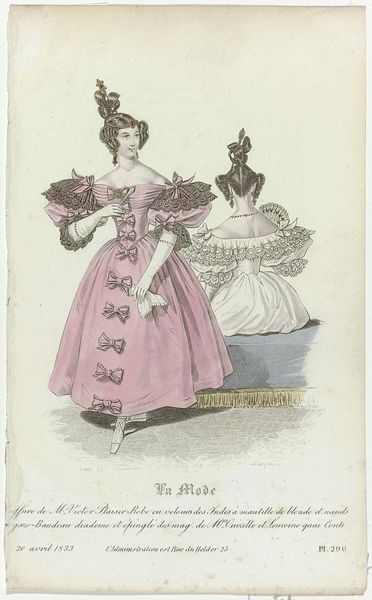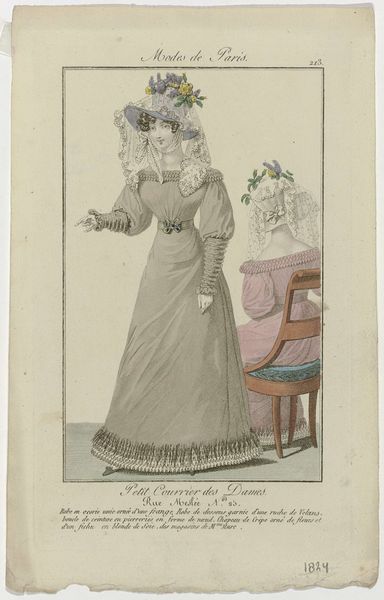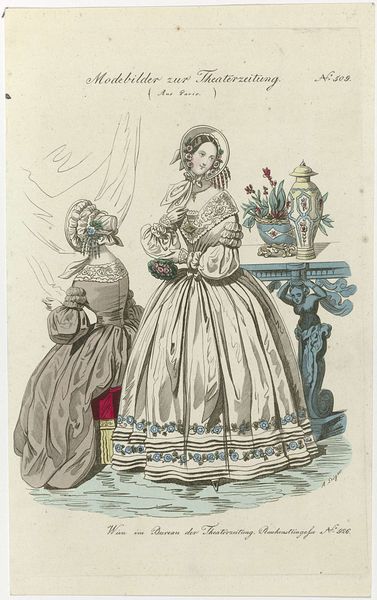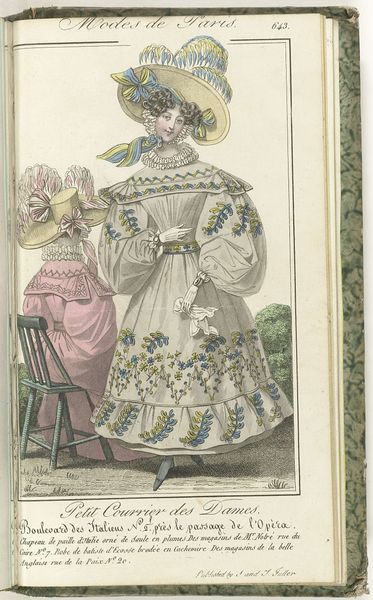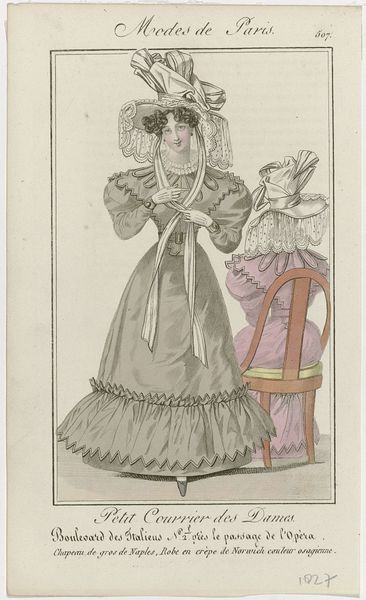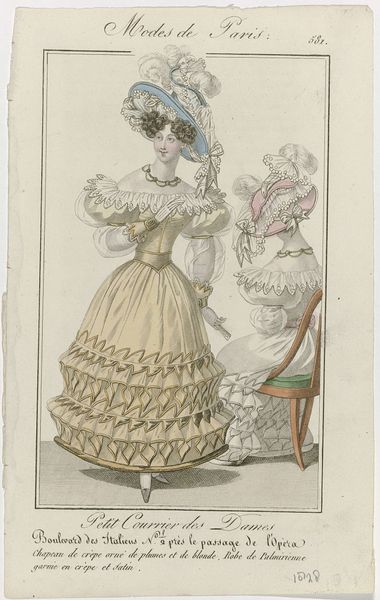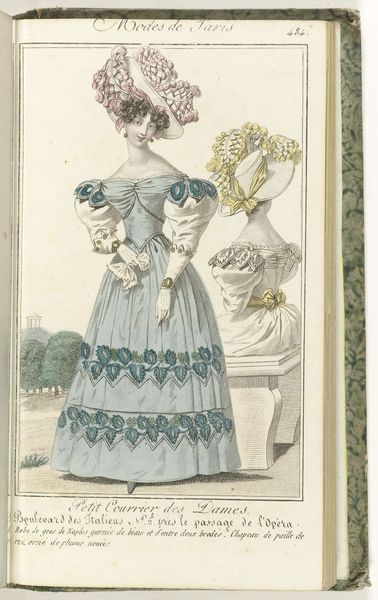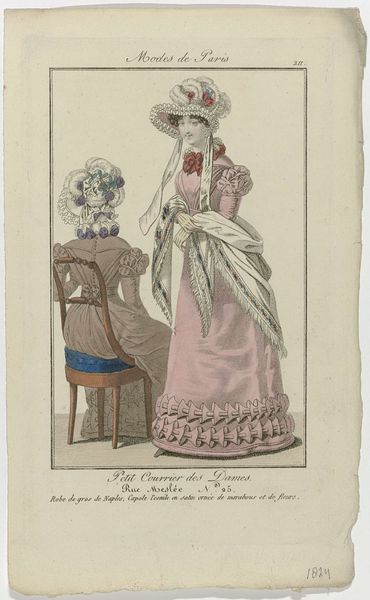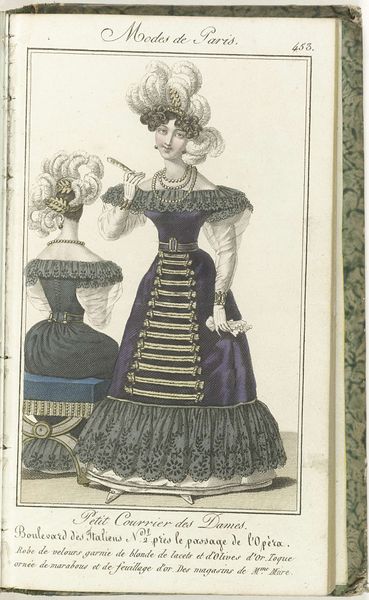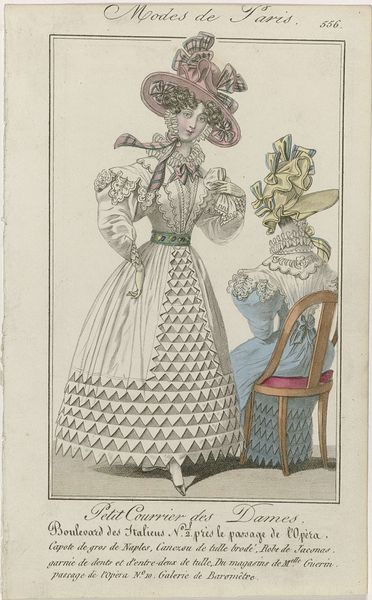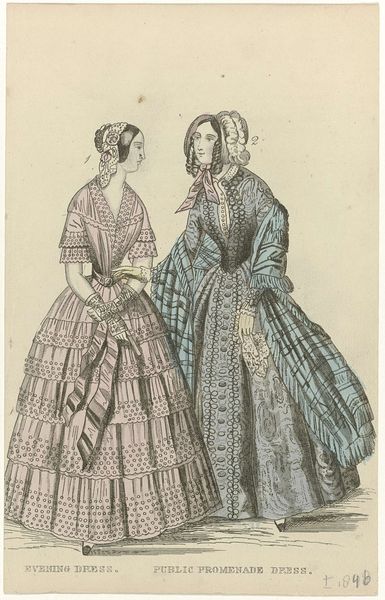
painting, print
#
portrait
#
painting
# print
#
figuration
#
romanticism
#
genre-painting
#
dress
Dimensions: height 205 mm, width 130 mm
Copyright: Rijks Museum: Open Domain
Editor: So, we’re looking at “The Ladies’ Cabinet of Fashions, ca. 1848: Carriage Dresses.” It seems to be a print, maybe a painting originally, showcasing two elaborately dressed women. There's something almost performative about them, like they're consciously displaying wealth and status. What do you see in this piece, especially considering its time? Curator: This image serves as a fascinating document of social stratification and the public role of women in the mid-19th century. Consider the title itself: “The Ladies’ Cabinet of Fashions.” It speaks to a rising consumer culture, where magazines dictated trends, and social status was increasingly linked to visible displays of wealth through fashion. These "Carriage Dresses," meant to be seen from a carriage, speak to the limited but crucial public spaces women occupied. Do you notice how much detail is lavished on these garments? Editor: Absolutely! The lace, the frills, the bonnets...it's all so excessive, almost deliberately designed to attract attention. It's interesting to think of the carriage as a stage. Curator: Exactly! And who is the audience? Fellow members of the elite, certainly, but also a growing middle class aspiring to similar levels of refinement. Fashion prints like these didn't just reflect trends, they helped *create* them, standardizing aspirations across social lines. Note how these are "types," not individualized portraits. What does that imply about the broader social function of such imagery? Editor: It suggests fashion was less about personal expression and more about conforming to an ideal, a visual language of class. And I hadn't considered the standardization aspect - it makes sense that mass media was starting to shape desires. Curator: Precisely. This print encapsulates a moment of significant social and cultural transformation, where the private sphere of domesticity begins to intersect with the public sphere of consumption and display. It makes you think about who controlled those displays and to what end, doesn't it? Editor: It certainly does. I’ll definitely view similar fashion plates with fresh eyes. Thanks! Curator: My pleasure, seeing this today enriches one’s comprehension of art's purpose within evolving societies.
Comments
No comments
Be the first to comment and join the conversation on the ultimate creative platform.
